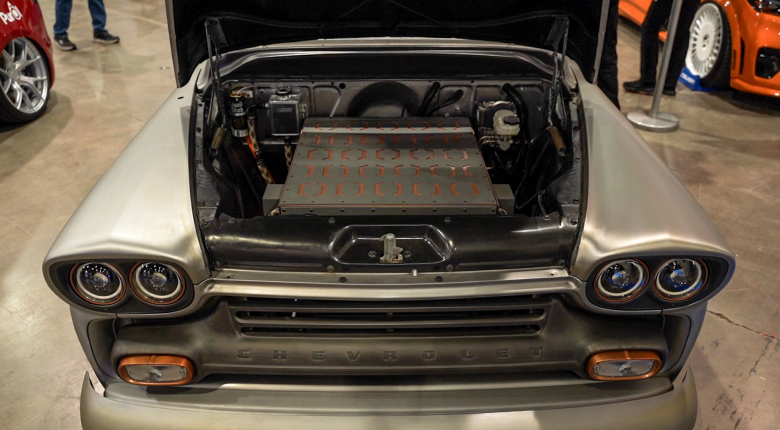Hot rodding has been and always will be a HUGE part of American car culture, and electric vehicle conversions are bringing a wider range of options to the street.
Why do a Tesla swap and not use aftermarket components? What happens to the 12v electronics including the lights and indicators without an alternator or the brakes without engine vacuum to operate with?
At SEMA, Casey Loter gives us some answers to the above and insight into this customer's 1959 Chevy Apache Fleetside electric vehicle conversion, which is powered by a Tesla Model S motor and battery pack that's been rehoused for better packaging and suspension options.
While Tesla parts are used, they are scrubbed clean of Tesla's limited software by companies like EV Control, who can easily tap in remotely for this process. An Orion battery management system is used along with Stealth EV charging components and a cooling system for the charger and batteries up from and motors in the rear for this specific Checy Apache conversion.
------------------------------------
TIME STAMPS:
0:00 - Electric 51 Speed Shop
0:12 - Tesla S Conversion
0:40 - Power Capabilities: 800hp
0:56 - Weight Comparisons
1:21 - VCU Battery Control System
2:10 - BMS - Battery Control System
2:48 - CAN Communications
3:16 - Why Tesla Swap vs Aftermarket
4:19 - How Does The 12v System Work?
4:57 - Charger and DC to DC Specs
5:25 - Cooling Systems
5:42 - Brake Setup
6:40 - Suspension Setup
7:03 - iPad Dash Display
8:08 - Regenerative Braking
8:50 - The Hard Parts
9:35 - Thanks Casey!
10:00 - BUILD.TUNE.DRIVE







Comments
No one has commented on this page yet.